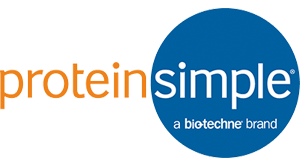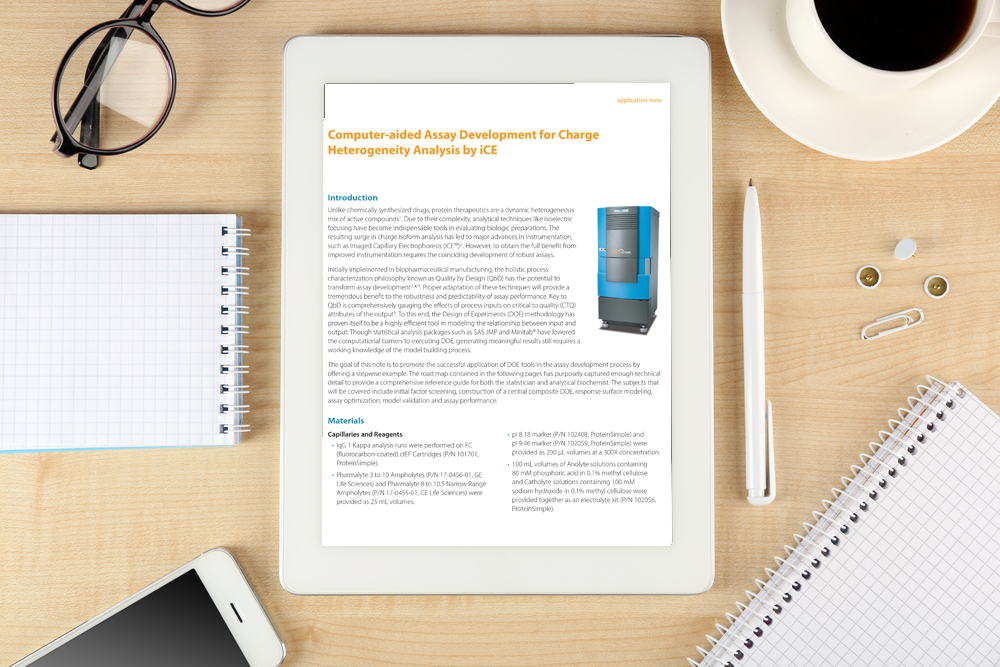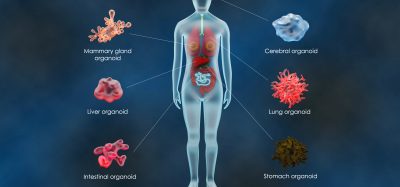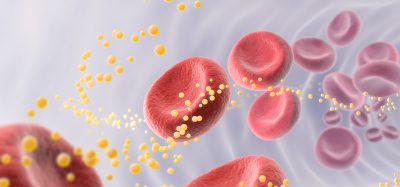App Note: Computer-aided Assay Development for Charge Heterogeneity Analysis by iCE
Posted: 13 October 2015 | ProteinSimple
Due to protein therapeutic complexity, techniques like isoelectric focusing have become indispensable tools in evaluating biologic preparations…
Unlike chemically synthesized drugs, protein therapeutics are a dynamic heterogeneous mix of active compounds.
Due to their complexity, analytical techniques like isoelectric focusing have become indispensable tools in evaluating biologic preparations. The resulting surge in charge isoform analysis has led to major advances in instrumentation, such as Imaged Capillary Electrophoresis (iCE™). However, to obtain the full benefit from improved instrumentation requires the coinciding development of robust assays. Initially implemented in biopharmaceutical manufacturing, the holistic process characterization philosophy known as Quality by Design (QbD) has the potential to transform assay development. Proper adaptation of these techniques will provide a tremendous benefit to the robustness and predictability of assay performance. Key to QbD is comprehensively gauging the effects of process inputs on critical to quality (CTQ) attributes of the output.
To this end, the Design of Experiments (DOE) methodology has proven itself to be a highly efficient tool in modelling the relationship between input and output. Though statistical analysis packages such as SAS JMP and Minitab® have lowered the computational barriers to executing DOE, generating meaningful results still requires a working knowledge of the model building process. The goal of this note is to promote the successful application of DOE tools in the assay development process by offering a stepwise example. The roadmap contained in the following pages has purposely captured enough technical detail to provide a comprehensive reference guide for both the statistician and analytical biochemist. The subjects that will be covered include initial factor screening, construction of a central composite DOE, response surface modelling, assay optimization, model validation and assay performance.
Biomarkers are redefining how precision therapies are discovered, validated and delivered.
This exclusive expert-led report reveals how leading teams are using biomarker science to drive faster insights, cleaner data and more targeted treatments – from discovery to diagnostics.
Inside the report:
- How leading organisations are reshaping strategy with biomarker-led approaches
- Better tools for real-time decision-making – turning complex data into faster insights
- Global standardisation and assay sensitivity – what it takes to scale across networks
Discover how biomarker science is addressing the biggest hurdles in drug discovery, translational research and precision medicine – access your free copy today
This application note is restricted - login or subscribe free to access
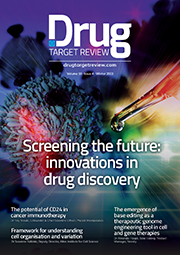

Why subscribe? Join our growing community of thousands of industry professionals and gain access to:
- quarterly issues in print and/or digital format
- case studies, whitepapers, webinars and industry-leading content
- breaking news and features
- our extensive online archive of thousands of articles and years of past issues
- ...And it's all free!
Click here to Subscribe today Login here
Related content from this organisation
Related topics
Assays, Drug Discovery, Drug Targets, Next-Generation Sequencing (NGS), Screening, Translational Science
Related organisations
ProteinSimple



